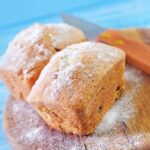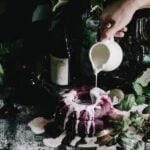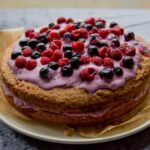Are you looking to take your cake decorating skills to the next level? Whether you’re a seasoned baker or just starting out, learning how to make cake decorating icing from scratch can be a game-changer. In this article, we’ll explore the importance of using homemade icing for cake decorating and provide you with a comprehensive guide on how to create your own delicious and versatile icing.
When it comes to cake decorating, one of the most important elements is the icing. While store-bought options are convenient, nothing beats the flavor and customizable nature of homemade icing. By making your own icing from scratch, you have full control over the ingredients, consistency, and flavor, allowing you to create stunning cakes that not only look amazing but taste incredible too.
To get started with making your own cake decorating icing from scratch, you’ll need a few key ingredients and tools. This includes pantry staples like sugar, vanilla extract, and butter, as well as specialized equipment such as a stand mixer or hand mixer. In the following sections, we will delve into these essential components in detail and provide tips on where to source high-quality ingredients and equipment for optimal results.
Ready to elevate your cake decorating game? Let’s dive in.
The Basic Ingredients of Cake Decorating Icing
When it comes to making cake decorating icing from scratch, having the right ingredients is crucial to achieving the perfect flavor and texture. The essential ingredients for making icing from scratch include confectioners’ sugar (also known as powdered sugar), unsalted butter or shortening, vanilla extract, and milk or heavy cream. These basic ingredients form the foundation of most types of icing and can be easily customized to suit different flavor preferences.
Whether you’re making a simple buttercream or a more elaborate royal icing, using high-quality ingredients is key to creating delicious icing. When sourcing your ingredients, opt for confectioners’ sugar that is finely ground and free of any lumps for a smooth and creamy texture. Additionally, choose fresh unsalted butter or shortening for a rich and flavorful base, along with pure vanilla extract for the best possible taste.
In addition to the primary ingredients, there are also variations that may require additional components such as meringue powder for royal icing or marshmallow fluff for a unique twist on traditional buttercream. Ultimately, understanding the role of each ingredient in the icing-making process will help you achieve professional-quality results every time.
| Ingredient | Importance |
|---|---|
| Confectioners’ Sugar (Powdered Sugar) | Essential for texture and sweetness |
| Unsalted Butter or Shortening | Creates a rich and creamy base |
| Vanilla Extract | Provides flavor depth and aroma |
Tools and Equipment Needed for Making Cake Decorating Icing
| Tools and Equipment | Description |
|---|---|
| Stand Mixer or Hand Mixer | An electric stand mixer or a hand mixer is essential for blending the ingredients together to achieve a smooth and creamy consistency. |
| Bowls | A variety of mixing bowls in different sizes are needed for measuring, mixing, and storing the icing. |
| Spatula or Bench Scraper | These tools are used for scraping down the sides of the mixing bowl and smoothing out the icing on the cake. |
| Piping Bags and Tips | For more intricate designs, piping bags and various tips are necessary to create decorative elements on cakes and other baked goods. |
| Icing Spatula | An offset spatula helps in spreading icing smoothly across the surface of the cake, creating an even layer. |
It is important to note that each tool has its own specific function in the cake decorating process, contributing to achieving professional results. These tools can often be found at kitchen supply stores or online baking specialty shops. By investing in high-quality equipment, you can enhance your cake decorating skills and create visually stunning desserts that will impress friends, family, or clients.
Step-by-Step Instructions on How to Make Cake Decorating Icing
Making cake decorating icing from scratch is a rewarding and essential skill for any baker or home cook. With just a few simple ingredients and the right technique, you can create beautifully smooth and delicious icing to adorn your cakes. Here’s a step-by-step guide on how to make cake decorating icing from scratch:
1. **Gather your ingredients**: To make basic buttercream icing, you will need unsalted butter, confectioners’ sugar (also known as powdered sugar), vanilla extract, and heavy cream. Ensure that your ingredients are at room temperature for easy mixing.
2. **Prepare your tools**: You will need an electric mixer or stand mixer to whip the ingredients together. Additionally, have a spatula or offset spatula on hand for spreading the icing onto your cake.
3. **Mix the butter and sugar**: In a large bowl, beat the softened butter until creamy. Gradually add in the confectioners’ sugar, mixing on low speed until well combined.
4. **Add flavor and consistency**: Pour in the vanilla extract for flavoring and heavy cream to achieve your desired consistency. Whip the mixture on medium-high speed until light and fluffy.
5. **Adjust as necessary**: If your icing is too thick, add more cream one tablespoon at a time until desired consistency is reached. Conversely, if it is too thin, add more confectioners’ sugar gradually until it reaches the right thickness.
6. **Use immediately or store**: Your homemade cake decorating icing is now ready to be used. If not using right away, store it in an airtight container at room temperature for up to a week.
By following these simple steps, you can create perfect homemade cake decorating icing every time – customized to your taste preferences and dietary requirements.
Different Types of Cake Decorating Icing
When it comes to cake decorating, the type of icing used can greatly affect the final look and taste of the cake. There are several different types of icing that are commonly used for cake decorating, each with its own unique properties and uses. Understanding the differences between these types of icing is essential for achieving the desired results when decorating cakes.
The most common types of icing used for cake decorating include:
- Buttercream: This type of icing is made from butter, powdered sugar, and flavorings. It is versatile and easy to work with, making it a popular choice for both frosting and piping decorations.
- Royal Icing: Made from powdered sugar, egg whites, and flavorings, royal icing dries hard and smooth, making it ideal for intricate designs and decorative accents on cakes and cookies.
- Fondant: A pliable sugar paste that can be rolled out into thin sheets to cover cakes or shaped into various decorations. Fondant creates a smooth and flawless finish on cakes but has a distinct taste that may not appeal to everyone.
Each type of icing has its own unique set of advantages and challenges when it comes to cake decorating. Buttercream is perfect for creating smooth finishes and textured designs, while royal icing is best suited for intricate details and piped decorations. Fondant offers a polished look but requires specific techniques to achieve a professional finish.
Choosing the right type of icing for your cake decorating project will depend on factors such as the desired aesthetics, flavor preferences, and overall design concept. Experimenting with different types of icing will allow you to discover which one works best for your specific needs as a baker or decorator.
Coloring and Flavoring Cake Decorating Icing
When it comes to cake decorating, the color of the icing plays a crucial role in the overall aesthetics of the finished product. While store-bought icing often comes in a limited range of colors, making your own icing from scratch allows for endless possibilities in terms of coloring. The most common way to color homemade icing is by using gel or liquid food coloring.
Gel coloring is preferred by many bakers as it is more concentrated and does not water down the icing. Additionally, gel colors are available in a wide array of shades, allowing for precise color-matching and achieving vibrant hues.
While traditional vanilla-flavored icing is always a crowd-pleaser, experimenting with different flavors can take your cake decorating to the next level. When flavoring homemade icing, it’s essential to use high-quality extracts or flavorings to ensure a delicious taste.
Some popular options include almond extract, lemon zest, peppermint oil, and even espresso powder for a rich coffee flavor. It’s important to start with small amounts of additional flavorings and taste as you go to avoid overpowering the icing with too much flavor.
Natural vs Artificial Coloring and Flavoring Options
For those who prefer natural ingredients in their baking, there are various alternatives to artificial coloring and flavoring options. Natural food dyes made from ingredients like beets (for red/pink), turmeric (for yellow), spinach (for green), and blueberries (for purple/blue) offer a healthier alternative to traditional food coloring.
Similarly, natural extracts such as fresh fruit juices, citrus zests, and herbal infusions can be used to add flavor without relying on artificial additives. When using natural ingredients for coloring or flavoring, it’s important to consider how they may affect the texture and consistency of the icing.
Storage and Shelf Life of Homemade Cake Decorating Icing
When it comes to making cake decorating icing from scratch, knowing how to properly store it and understanding its shelf life is essential for any baker. Homemade icing can be a labor of love, so preserving its freshness and quality is a must. Proper storage ensures that the icing maintains its texture and flavor, allowing you to use it for future projects without sacrificing taste or appearance.
Guidelines for Properly Storing Homemade Icing
After preparing your homemade cake decorating icing, it is crucial to store it correctly to maintain its quality. The best way to store homemade icing is in an airtight container at room temperature.
Make sure that the container is sealed tightly to prevent air exposure, which can dry out the icing. If you have leftover icing after decorating your cake, ensure that any utensils used to scoop out the icing are clean and avoid introducing crumbs or other contaminants into the container.
Information on Shelf Life and How to Know When the Icing Has Gone Bad
The shelf life of homemade cake decorating icing varies depending on the type of icing and the ingredients used. In general, buttercream icing can last for up to 2 weeks when stored properly at room temperature, while royal icing can last for several weeks. However, if milk or cream cheese is used in the recipe, then refrigeration may be necessary to prevent spoilage.
To determine if homemade icing has gone bad, look for signs of spoilage such as an off-smell or unusual color changes. Additionally, if there are any visible signs of mold growth or if the consistency changes significantly, it’s best to discard the icing to avoid potential foodborne illness.
Properly storing homemade cake decorating icing not only extends its shelf life but also ensures that you always have high-quality frosting on hand for your baking projects. With these guidelines in mind, you can maximize the use of your homemade icing without compromising on taste or safety.
Troubleshooting Common Issues With Homemade Icing
In conclusion, making cake decorating icing from scratch can seem daunting at first, but with the right ingredients, tools, and knowledge, it can be a fun and rewarding process. By following the step-by-step instructions provided in this article and utilizing the tips and tricks for achieving the perfect consistency and flavor, you can create professional-quality icing right in your own kitchen.
It’s important to remember that practice makes perfect when it comes to making homemade icing. Don’t be discouraged if you encounter common issues such as grainy texture or runny consistency – these problems can often be easily fixed with the troubleshooting tips provided. With patience and persistence, you’ll soon become an expert at making and decorating with homemade icing.
Lastly, by mastering the art of coloring and flavoring homemade icing, you can truly take your cake decorating to the next level. Whether you prefer natural or artificial coloring and flavoring options, there are endless possibilities for creating unique and visually stunning cakes. With proper storage techniques, you can also ensure that your homemade icing has a longer shelf life, allowing you to have it on hand for whenever inspiration strikes.
So why not give it a try? Making cake decorating icing from scratch may just become your new favorite hobby.
Frequently Asked Questions
What Icing Is Best for Cake Decorating?
The best icing for cake decorating depends on the desired outcome. Buttercream icing is a popular choice due to its versatility and ability to hold intricate designs.
Royal icing, made with powdered sugar and egg whites, is another common option for creating smooth surfaces and delicate details. Fondant icing, which can be rolled out and draped over cakes for a flawless finish, is often used for more elaborate designs.
How to Make Icing Decoration on Cake?
Making icing decorations on a cake involves several techniques depending on the design you want to create. Simple decorations like rosettes or borders can be made using a piping bag and various tips to achieve different shapes and textures.
For more intricate designs, like flowers or leaves, using a combination of piping techniques and fondant cutouts may be necessary. It’s important to practice beforehand and have patience when creating icing decorations to ensure the best results.
How Do You Make Fake Icing for Decorations?
Creating fake icing for decorations often involves using materials like modeling clay or silicone molds that mimic the appearance of real icing. Air-dry clay can be shaped into realistic-looking dollops of frosting or piped into swirls similar to buttercream.
Silicone molds can also be used to make fake royal icing designs that are lightweight and easily applied to cakes without the risk of melting or deteriorating over time. Adding food coloring or edible dust can enhance the realism of fake icing for decorative purposes.

Welcome to my blog about home and family. This blog is a place where I will share my thoughts, ideas, and experiences related to these important topics. I am a stay-at-home mom with two young children. I hope you enjoy reading it! and may find some helpful tips and ideas that will make your home and family life even better!





